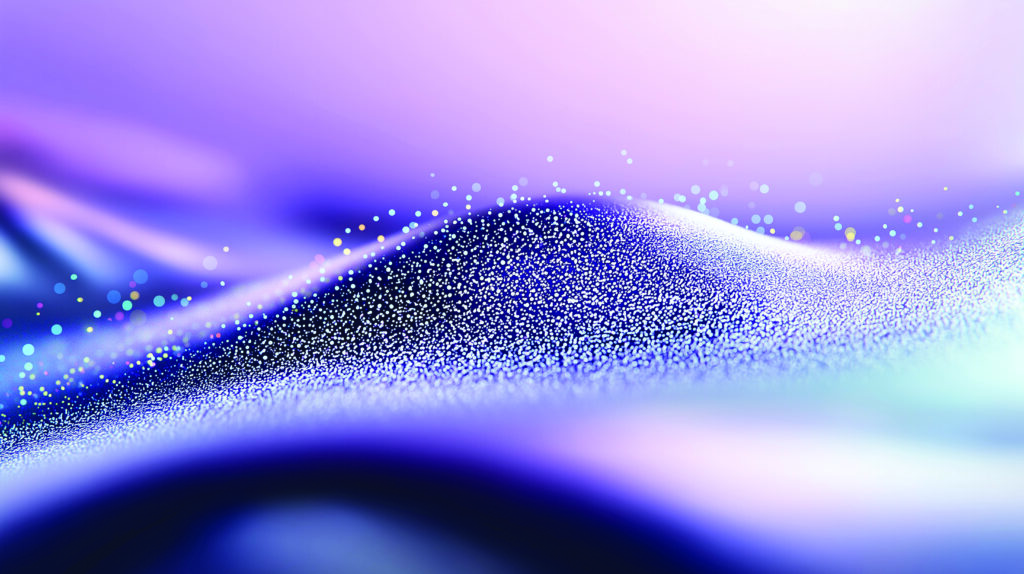Best Paper Award, 2025 CoatingsTech Conference
A Useful Technique for QC and to Determine the Equivalency of Materials for Coatings Formulations
By David Fairhurst, Colloid Consultants Ltd.; R. Sharma, Mageleka, Inc.; and R. Wörheide, Metromation Inc.
Paints and coatings in their final composition are complex; their formulation entails a multitude of system details that influence the final outcome. Hence, it is difficult to attribute the root cause when deviations are found via testing or performance quality control (QC). Further, a major concern in the industry is the question of material “equivalency.” Having a metric that represents a specific material quality and developing quality numbers is the key to implementing an appropriate QC protocol. Low-field nuclear magnetic resonance (LF-NMR) liquid relaxation is shown to provide such a test, and we explore its application as a powerful, fast, and nondestructive analytical tool to improve QC and assess material equivalency in coatings formulations. Traditional methods often fall short in evaluating raw materials, particle dispersions, or complex formulations without extensive sample preparation or dilution. LF-NMR relaxation, using a small benchtop spectrometer, overcomes these limitations by enabling direct measurements on opaque, high-solid suspensions under real-use conditions and affords a cost-effective methodology to identify the replacement of both powder and solvent raw materials. Measurements are also shown to be sensitive to solvent-particle intermolecular forces, making it a useful technique to easily determine the Hansen solubility parameters (HSP) for both polymers and pigments.
Introduction
The importance of the process of dispersion1 and its profound effect on the economics and quality of the subsequent product has long been recognized.2 Thorough characterization and quality control (QC) of particulate suspensions is, therefore, paramount in obtaining optimum performance features and cost-effective benefits from such systems.
QC is a process through which a business seeks to ensure that product quality is maintained or improved. High quality products are much more efficient and effective, benefiting both the manufacturer and the consumer. A major function in QC is to verify the product quality against some predefined standard(s), to ensure the quality of all the batches of products manufactured at every stage of production. In their final composition, paint and coating formulations are complex, and it is difficult to attribute the root cause when deviations are found via testing or performance QC.
Important factors in the consistency of final products are the raw and semifinished materials used in formulation.3,4 Maintaining their quality is critical; having a metric that represents a specific material quality and developing quality numbers is the key for implementing an appropriate QC protocol. This, in turn, can minimize waste since these materials can be rejected before formulation, or the production process can be adjusted at an earlier stage. Analysis of less complex mixtures is also much simpler.
Further, a major concern is the question of material “equivalency”—for example, when dictated by regulatory obligations to replace components of a paint system. Many actions to show equivalence address the final dried film with less focus on the application sensitivity of the paint system, which is highly related to the dispersion characteristics of the matrix. Unfortunately, supply houses and distributors are not usually the primary manufacturer of raw materials. However, it is critical to verify the technical specification of all materials, as this can directly influence their behavior at every stage in the manufacturing process—from basic formulation to final end-use product. Indeed, potential variable chemical and physical characteristics can have profound effects on the behavior of paint and coating suspensions, for example, a change in rheology owing to shear stress. 5,6 Also, with incomplete dispersion of pigments, shear stress in the paint line can result in a “post-dispersion” with the effect of color shifts. Thus, an exact specification is needed for all materials used in formulations because, without these, comparisons (e.g., between batches, lots, or just concentrations) can often be meaningless.
Any QC test must be objective, easy to run, and predictive; that is, it should measure fundamental characteristics of any system and is neither a function of the instrument, nor of the operator. However, studying these systems in situ is not straightforward, as the formulations are opaque and are often highly concentrated dispersions in a variety of aqueous and nonaqueous liquids. There are few tools available with which to directly measure the suspension characteristics. LF-NMR liquid relaxation provides such a test. Further, the ability to store, and reanalyze, samples is a very useful, convenient advantage of the technique. It is quantifiable, fast, and noninvasive, and offers practical and economic benefits as a QC tool.
Continue reading in the July-August digital issue of CoatingsTech
